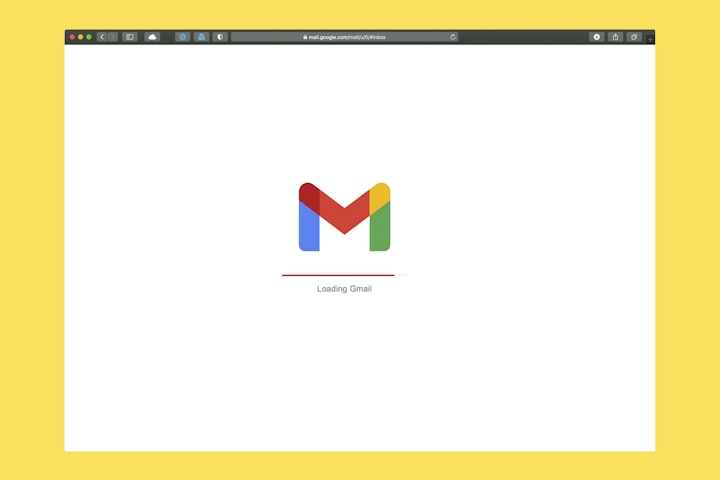Digital Marketing Strategies to Boost Your Business Growth
Digital Marketing: A Beginner's Guide

Digital Marketing: A Beginner's Guide
Digital marketing is an essential part of any business's marketing strategy in today's digital age. It involves promoting products or services through digital channels such as search engines, social media, email, and websites. In this beginner's guide, we'll cover the basics of digital marketing and how to get started.
1. Define your target audience
Defining your target audience is the process of identifying the group of people or businesses that are most likely to be interested in your product or service. This includes understanding their demographics, interests, behaviors, and pain points. By defining your target audience, you can create marketing campaigns that resonate with them and drive engagement.
Some key factors to consider when defining your target audience include:
1. Demographics: This includes factors such as age, gender, income, education, location, and more. Understanding your audience's demographics can help you create messaging that speaks to their specific needs and interests.
2. Interests: This includes the things your audience is interested in, such as hobbies, lifestyle choices, and values. Understanding your audience's interests can help you create content that resonates with them and positions your brand as a relevant and trustworthy resource.
3. Behaviors: This includes the actions your audience takes, such as the websites they visit, the products they purchase, and the social media channels they use. Understanding your audience's behaviors can help you target them more effectively and create campaigns that are more likely to drive conversions.
4. Pain points: This includes the problems or challenges your audience faces that your product or service can solve. Understanding your audience's pain points can help you create messaging that speaks directly to their needs and positions your brand as a valuable solution.
By defining your target audience, you can create marketing campaigns that are more effective and efficient. You can tailor your messaging, choose the right channels, and target your audience more precisely, leading to better engagement, conversions, and ROI.
2. Choose your channels
There are various digital marketing channels to choose from, such as search engine optimization (SEO), pay-per-click (PPC) advertising, social media marketing, email marketing, content marketing, and more. Each channel has its own strengths and weaknesses, so it's essential to choose the ones that best fit your business goals and target audience.
Choosing the right digital marketing channels is important to reach your target audience and achieve your marketing goals. Here are some common digital marketing channels and how they can be used:
1. Search engine optimization (SEO): SEO involves optimizing your website and content to rank higher in search engine results pages (SERPs). This can help drive organic traffic to your website and increase your visibility online.
2. Pay-per-click (PPC) advertising: PPC advertising involves paying for ad space on search engines, social media platforms, or other websites. This can help you reach your target audience more quickly and drive traffic to your website.
3. Social media marketing: Social media marketing involves promoting your brand and content on social media platforms such as Facebook, Twitter, LinkedIn, Instagram, and others. Social media is an excellent way to engage with your audience, build brand awareness, and drive traffic to your website.
4. Email marketing: Email marketing involves sending promotional messages or newsletters to your email subscribers. This is a cost-effective way to stay in touch with your customers and prospects, share educational content, and promote your products or services.
5. Content marketing: Content marketing involves creating valuable and engaging content that resonates with your target audience. This can include blog posts, videos, infographics, eBooks, and more. Content marketing can help you attract and engage your audience, build trust and credibility, and position your brand as a thought leader in your industry.
6. Influencer marketing: Influencer marketing involves partnering with individuals or organizations that have a large following on social media or other digital platforms. This can help you reach a wider audience and build credibility by association.
7. Affiliate marketing: Affiliate marketing involves partnering with other businesses or individuals to promote your products or services. This can help you reach a wider audience and drive more conversions.
When choosing your digital marketing channels, consider your target audience, marketing goals, and budget. Focus on the channels that are most likely to reach your target audience and achieve your marketing objectives.
3. Develop a content strategy
Content is king in digital marketing. Creating valuable and engaging content that resonates with your target audience is crucial to building brand awareness and driving engagement. A content strategy involves creating a plan for the type of content you'll create, how often you'll create it, and where you'll distribute it.
Developing a content strategy is crucial for any digital marketing campaign, as it helps to ensure that your content is aligned with your marketing goals and resonates with your target audience. Here are the steps to develop a content strategy:
1. Define your marketing goals: Determine what you want to achieve with your content, such as increasing brand awareness, driving traffic to your website, generating leads, or boosting sales.
2. Identify your target audience: Determine who you are creating content for, and what their pain points, interests, and behaviors are. This will help you create content that resonates with your audience and drives engagement.
3. Conduct a content audit: Take stock of all the existing content you have, and evaluate its effectiveness in achieving your marketing goals. Identify gaps in your content that need to be filled and areas where you can improve.
4. Create a content plan: Determine the types of content that will be most effective in achieving your marketing goals, such as blog posts, social media posts, videos, infographics, whitepapers, or case studies. Create a content calendar that outlines what content you will create, when it will be published, and who will be responsible for creating and promoting it.
5. Optimize for search engines: Ensure that your content is optimized for search engines, using keywords and meta tags to improve its visibility and ranking in search results.
6. Promote your content: Share your content on social media, email newsletters, and other channels to increase its reach and engagement. Consider using paid promotion to amplify your content to a wider audience.
7. Measure and optimize: Track the performance of your content using metrics such as traffic, engagement, leads, and sales. Use this data to refine and optimize your content strategy over time.
By following these steps, you can develop a content strategy that is aligned with your marketing goals, resonates with your target audience, and drives engagement and conversions.
4. Optimize for search engines Search engine optimization (SEO)
Optimize for search engines Search engine optimization (SEO) is the process of optimizing your website to rank higher in search engine results pages (SERPs). This involves keyword research, on-page optimization, and link building. By optimizing your website for search engines, you can attract more organic traffic and increase your visibility online.
Search engine optimization (SEO) is a critical component of any digital marketing strategy. It involves optimizing your website and content to rank higher in search engine results pages (SERPs) for relevant keywords and phrases. Here are some steps to optimize your content for search engines:
1. Conduct keyword research: Identify the keywords and phrases that your target audience is using to search for your products or services. Use keyword research tools such as Google Keyword Planner, Ahrefs, or SEMrush to identify relevant keywords and their search volume.
2. Use keywords strategically: Once you have identified relevant keywords, use them strategically in your website copy, blog posts, and other content. Be sure to use them naturally and avoid overusing them, as this can result in penalties from search engines.
3. Optimize your website structure: Ensure that your website is well-structured and easy to navigate, with clear headings and subheadings that use relevant keywords. Use internal linking to connect related content and help search engines understand the structure of your website.
4. Optimize your meta tags: Use relevant keywords in your title tags and meta descriptions, which appear in search engine results pages. This will help your content stand out and improve its click-through rate.
5. Create high-quality content: Create content that is informative, engaging, and relevant to your target audience. This will help increase its visibility and encourage other websites to link back to your content, which is a key factor in SEO.
6. Use alt tags for images: Use descriptive alt tags for images, which help search engines understand the content of your images and improve your overall SEO.
7. Monitor your performance: Use analytics tools such as Google Analytics to monitor your website's performance, including your search engine rankings, traffic, and engagement. Use this data to refine and optimize your SEO strategy over time.
By optimizing your website and content for search engines, you can improve your visibility online, drive more traffic to your website, and increase your conversions and revenue.
5. Leverage social media
Social media marketing involves promoting your brand and content on social media channels such as Facebook, Instagram, Twitter, LinkedIn, and others. Social media is an excellent way to engage with your audience, build brand awareness, and drive traffic to your website.
Social media is a powerful tool for digital marketing that allows you to connect with your target audience, build brand awareness, and drive traffic to your website. Here are some steps to leverage social media for your digital marketing strategy:
1. Define your social media goals: Determine what you want to achieve with your social media strategy, such as increasing brand awareness, driving traffic to your website, generating leads, or boosting sales.
2. Choose the right social media channels: Identify the social media channels that are most relevant to your target audience and align with your marketing goals. For example, if you are targeting B2B customers, LinkedIn might be the best platform for you, while if you are targeting younger consumers, Instagram or TikTok might be more effective.
3. Create a social media plan: Develop a social media content calendar that outlines what content you will create, when it will be published, and who will be responsible for creating and promoting it. Use a mix of content types, such as images, videos, infographics, and blog posts, to keep your audience engaged.
4. Engage with your audience: Respond to comments and messages from your audience, ask for feedback, and encourage user-generated content. This will help build a community around your brand and increase engagement.
5. Use paid social media advertising: Consider using paid social media advertising to increase your reach and engagement. Social media platforms offer a range of advertising options, including sponsored posts, promoted tweets, and LinkedIn ads.
6. Measure your performance: Use social media analytics tools to track your performance, including your reach, engagement, and conversions. Use this data to refine and optimize your social media strategy over time.
By leveraging social media for your digital marketing strategy, you can increase your brand awareness, build a community around your brand, and drive more traffic and sales to your website.
6. Use email marketing
Email marketing is the process of sending promotional messages or newsletters to your email subscribers. It's a cost-effective way to stay in touch with your customers and prospects, share educational content, and promote your products or services.
Email marketing is a highly effective way to reach and engage with your target audience, nurture relationships, and drive conversions. Here are some steps to use email marketing in your digital marketing strategy:
1. Build your email list: Collect email addresses from your website visitors, social media followers, and other sources. You can also offer incentives such as exclusive content, discounts, or freebies to encourage people to sign up for your email list.
2. Segment your email list: Segment your email list based on factors such as demographics, interests, behavior, and purchase history. This will allow you to personalize your email content and improve engagement.
3. Choose an email marketing platform: Choose an email marketing platform that suits your needs and budget. Popular options include Mailchimp, Constant Contact, and Campaign Monitor.
4. Create engaging email content: Create engaging and relevant email content that resonates with your audience. Use a mix of content types, such as newsletters, promotional offers, and educational content, to keep your audience engaged.
5. Use personalization and automation: Use personalization and automation tools to deliver targeted and relevant content to your subscribers. This can include personalized subject lines, product recommendations, and automated drip campaigns.
6. Test and optimize your emails: Test and optimize your email campaigns by experimenting with different subject lines, calls to action, and email content. Use analytics tools to track your performance and identify areas for improvement.
7. Comply with email regulations: Ensure that your email campaigns comply with email regulations, such as the CAN-SPAM Act. This includes providing a clear opt-out option, including your physical address, and avoiding deceptive subject lines.
By using email marketing in your digital marketing strategy, you can build relationships with your audience, increase engagement, and drive conversions.
7. Measure and analyze your results
Measuring and analyzing your digital marketing results is essential to optimizing your campaigns and improving your ROI. You can use analytics tools such as Google Analytics, social media insights, and email marketing software to track your website traffic, engagement, conversion rates, and other key metrics.
Measuring and analyzing your digital marketing results is crucial to understanding the effectiveness of your strategy and making data-driven decisions to optimize it. Here are some steps to measure and analyze your digital marketing results:
1. Set clear goals and KPIs: Set clear goals and key performance indicators (KPIs) for your digital marketing strategy. These can include metrics such as website traffic, conversion rates, engagement, and ROI.
2. Use analytics tools: Use analytics tools such as Google Analytics, Facebook Insights, and Twitter Analytics to track your performance and gain insights into your audience and their behavior. Set up conversion tracking to measure the effectiveness of your campaigns.
3. Analyze your data: Analyze your data regularly to identify trends and patterns in your audience behavior and campaign performance. Look for areas of opportunity to optimize your strategy.
4. Test and experiment: Test different strategies, tactics, and content to see what works best for your audience. Use A/B testing to compare different versions of your content and campaigns.
5. Refine your strategy: Use your data and insights to refine your digital marketing strategy over time. Make data-driven decisions to optimize your campaigns and improve your results.
6. Report your results: Report your results to stakeholders and team members. Use clear and concise data visualizations to make it easy to understand the impact of your digital marketing efforts.
By measuring and analyzing your digital marketing results, you can gain valuable insights into your audience and their behavior, identify areas for improvement, and optimize your strategy to drive better results.
Conclusion
In conclusion, digital marketing is an essential part of any business's marketing strategy. By defining your target audience, choosing your channels, developing a content strategy, optimizing for search engines, leveraging social media, using email marketing, and measuring your results, you can create effective digital marketing campaigns that drive engagement and grow your business.
About the Creator
Prakashraj P
My name is Prakashraj P, and I'm passionate about blogging, conent creating and designing. I'm currently working as a Software Developer.





Comments
There are no comments for this story
Be the first to respond and start the conversation.